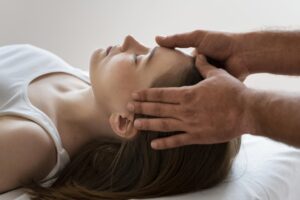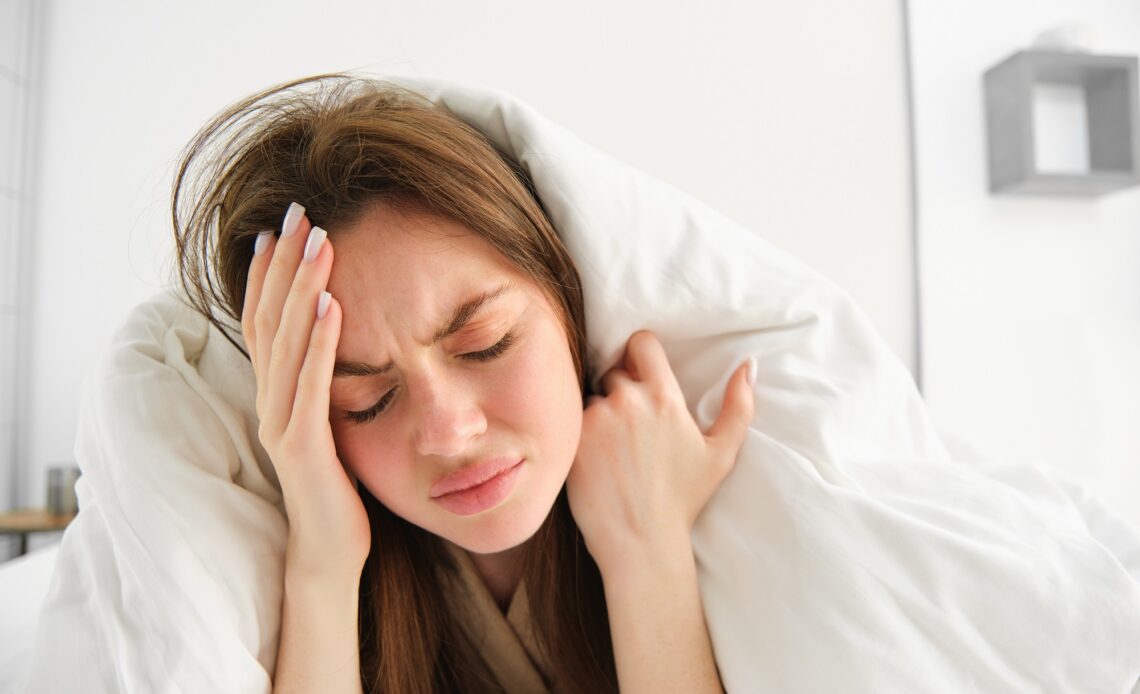Migraines and sleep disorders are two distinct yet intertwined conditions that can significantly impact an individual’s quality of life. Migraines, characterized by severe, throbbing headaches often accompanied by nausea, vomiting, and sensitivity to light and sound, can be debilitating and disruptive. On the other hand, sleep disorders encompass a wide range of conditions that interfere with the quality, quantity, or timing of sleep, leading to excessive daytime sleepiness, fatigue, and impaired cognitive function.
The prevalence of migraines and sleep disorders
According to the World Health Organization, migraines are among the most prevalent neurological disorders globally, affecting approximately 15% of the world’s population. Similarly, sleep disorders are highly prevalent, with an estimated 30% to 50% of adults experiencing some form of sleep disturbance at some point in their lives. These staggering statistics underscore the importance of understanding the connection between these two conditions and developing effective strategies to break the vicious cycle.
The link between migraines and sleep disorders

Numerous studies have demonstrated a strong bidirectional relationship between migraines and sleep disorders. Individuals with migraines often experience sleep disturbances, such as insomnia, sleep apnea, or restless leg syndrome, which can exacerbate migraine symptoms. Conversely, poor sleep quality or insufficient sleep can trigger or worsen migraine attacks.
This vicious cycle is perpetuated by the complex interplay of various physiological, neurological, and environmental factors. Disruptions in sleep patterns can alter the levels of neurotransmitters and hormones involved in pain modulation, leading to increased sensitivity to migraine triggers. Additionally, sleep deprivation can impair the body’s ability to regulate stress and inflammation, both of which are associated with migraine pathogenesis.
Common sleep disorders associated with migraines
Several sleep disorders have been linked to an increased risk of migraines, including:
- Insomnia: Difficulty falling asleep, staying asleep, or experiencing non-restorative sleep can trigger or exacerbate migraine attacks.
- Sleep apnea: This condition, characterized by repeated pauses in breathing during sleep, can disrupt sleep quality and contribute to migraine development.
- Restless leg syndrome (RLS): The unpleasant sensations and urge to move the legs during rest can lead to sleep disturbances and increased migraine frequency.
- Circadian rhythm disorders: Disruptions in the body’s internal clock, such as those experienced by shift workers or individuals with delayed sleep-wake phase disorder, can increase migraine susceptibility.
How sleep disorders can trigger migraines

The mechanisms by which sleep disorders contribute to migraines are multifaceted and complex. Here are some key ways in which sleep disorders can trigger or exacerbate migraine attacks:
- Disrupted sleep homeostasis: Sleep plays a crucial role in maintaining the body’s homeostasis, including regulating neurotransmitter levels, hormones, and inflammatory processes. Sleep disturbances can disrupt this balance, increasing the likelihood of migraine attacks.
- Increased stress and cortisol levels: Poor sleep quality is associated with elevated levels of the stress hormone cortisol, which can sensitize the brain to migraine triggers and lower the threshold for pain perception.
- Altered pain processing: Sleep deprivation can impair the brain’s ability to modulate pain signals, leading to increased sensitivity to migraine triggers and a lower pain threshold.
- Disrupted circadian rhythms: Disturbances in the body’s internal clock can affect the release of hormones and neurotransmitters involved in migraine pathogenesis, increasing the risk of migraine attacks.
Tips for managing migraines and sleep disorders
To break the vicious cycle of migraines and sleep disorders, a multifaceted approach is often necessary. Here are some tips to help manage both conditions:
- Establish a consistent sleep routine: Maintain a regular sleep schedule, even on weekends, and create a relaxing bedtime routine to promote better sleep quality.
- Optimize sleep environment: Ensure your bedroom is cool, dark, and quiet, and invest in a comfortable mattress and pillows to support restful sleep.
- Practice good sleep hygiene: Avoid caffeine, nicotine, and alcohol close to bedtime, and limit screen time before bed as the blue light can disrupt sleep patterns.
- Manage stress and anxiety: Engage in stress-reducing activities like yoga, meditation, or deep breathing exercises to promote relaxation and better sleep.
- Stay hydrated and eat a balanced diet: Dehydration and certain foods can trigger migraines, so drink plenty of water and consume a diet rich in fruits, vegetables, and whole grains.
- Exercise regularly: Regular physical activity can help reduce stress, improve sleep quality, and potentially decrease migraine frequency and severity.
- Consider cognitive-behavioral therapy (CBT): CBT can help individuals identify and modify thought patterns and behaviors that contribute to sleep disturbances and migraine triggers.
Treatment options for migraines and sleep disorders

In addition to lifestyle modifications, various treatment options are available for managing migraines and sleep disorders. These may include:
- Medications: Prescription medications, such as triptans, anti-seizure drugs, or antidepressants, can help prevent or alleviate migraine symptoms. Sleep aids or medications for specific sleep disorders may also be prescribed.
- Complementary therapies: Approaches like acupuncture, massage, or biofeedback can provide relief for both migraines and sleep disturbances.
- Continuous positive airway pressure (CPAP): For individuals with sleep apnea, CPAP therapy can improve sleep quality and potentially reduce migraine frequency.
- Bright light therapy: Exposure to bright light at specific times can help regulate circadian rhythms and improve sleep patterns, potentially benefiting migraine management.
- Nerve stimulation devices: Transcranial magnetic stimulation (TMS) or vagus nerve stimulation (VNS) may be effective in preventing or treating migraines in some individuals.
It’s essential to work closely with healthcare professionals, such as neurologists, sleep specialists, and pain management experts, to develop a personalized treatment plan that addresses both migraines and sleep disorders.
Coping strategies for living with migraines and sleep disorders
Living with migraines and sleep disorders can be challenging, but developing effective coping strategies can help improve overall quality of life. Here are some strategies to consider:

- Maintain a migraine and sleep diary: Track your migraine episodes, sleep patterns, potential triggers, and any interventions or treatments to identify patterns and better manage both conditions.
- Prioritize self-care: Engage in activities that promote relaxation and well-being, such as reading, listening to music, or practicing mindfulness.
- Seek support: Join support groups or connect with others who understand the challenges of living with migraines and sleep disorders to share experiences and coping strategies.
- Communicate with loved ones: Educate family and friends about your conditions and communicate your needs, so they can provide appropriate support and understanding.
- Adapt your environment: Make adjustments to your home, work, or social environments to minimize exposure to potential triggers and accommodate your needs during migraine episodes or periods of sleep disturbance.
- Practice acceptance and self-compassion: Recognize that migraines and sleep disorders are chronic conditions that may require ongoing management, and be kind to yourself during challenging times.
- Seek professional help: If you’re struggling with anxiety, depression, or other mental health concerns related to your conditions, don’t hesitate to seek support from a mental health professional.
Conclusion
The connection between migraines and sleep disorders is complex and multifaceted, but understanding this relationship is crucial for breaking the vicious cycle and improving overall quality of life. By implementing a comprehensive approach that combines lifestyle modifications, medical interventions, and effective coping strategies, individuals can take control of their conditions and achieve better sleep, reduced migraine frequency, and improved overall well-being.
Remember, every individual’s experience with migraines and sleep disorders is unique, and it may take time and perseverance to find the right combination of strategies that work best for you. Seek guidance from healthcare professionals, surround yourself with a supportive network, and remain committed to breaking the vicious cycle and reclaiming your quality of life.


